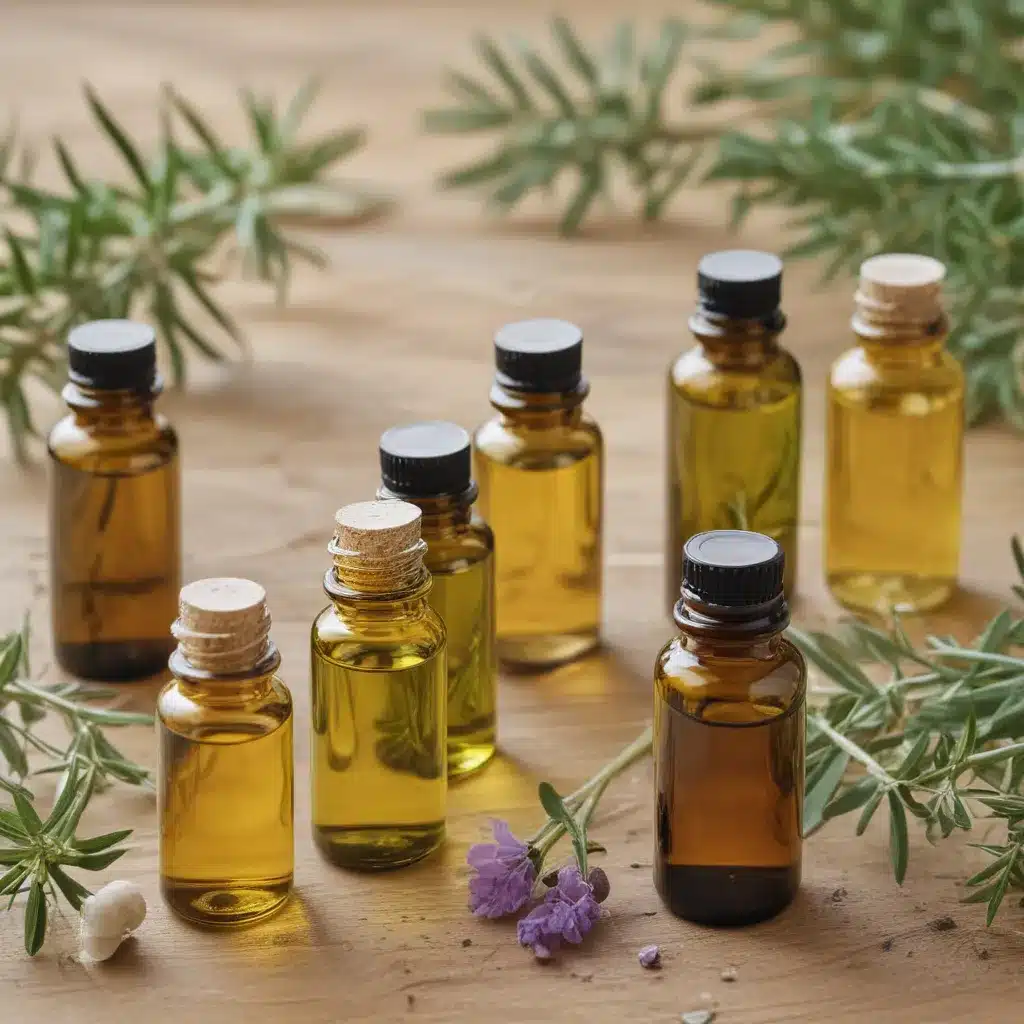
When it comes to essential oils, understanding the extraction techniques is important. From steam distillation to cold pressing, each method impacts the quality of the final product differently. The choice of extraction technique can influence not only the aroma but also the therapeutic properties of the oil. As we explore the various methods and their implications, we will uncover the intricate relationship between extraction techniques and the overall quality of essential oils, shedding light on an important aspect of this fascinating industry.
Overview of Essential Oils
Exploring the vast world of essential oils reveals a diverse array of aromatic compounds derived from plant materials through various extraction methods. These precious oils are not only known for their delightful scents but also for their numerous aromatherapy benefits and versatile essential oil uses.
Aromatherapy benefits encompass a wide range of healing properties that essential oils offer. From promoting relaxation and reducing stress to uplifting moods and improving mental clarity, these oils have been used for centuries to enhance both physical and emotional well-being. For example, lavender essential oil is renowned for its calming effects, making it a popular choice for relieving anxiety and aiding in sleep. On the other hand, peppermint essential oil is often used to boost energy levels and alleviate headaches.
In addition to their therapeutic effects, essential oils find extensive applications in various areas. Whether it’s skincare, haircare, cleaning products, or even cooking, these oils add a natural touch and unique benefits. For instance, tea tree essential oil is valued for its antibacterial and antifungal properties, making it a key ingredient in skincare products targeting acne and other skin issues. Similarly, lemon essential oil is commonly used in cleaning products for its invigorating scent and disinfecting capabilities.
The versatility and potency of essential oils make them valuable assets in promoting holistic well-being and enhancing daily life experiences.
Importance of Extraction Techniques
Understanding the diverse extraction techniques utilized in obtaining essential oils is important for maximizing their efficacy and preserving their therapeutic properties. Different extraction methods impact the quality of essential oils in various ways. Here are four key reasons why extraction techniques are important:
-
Extraction Efficiency: The method used to extract essential oils can greatly affect the efficiency of the process. Some techniques may yield higher quantities of oil from the raw material, ensuring a more cost-effective production process.
-
Aromatic Preservation: The way essential oils are extracted can impact the preservation of their aromatic compounds. Certain techniques, such as cold-pressing, may better retain the delicate scent and therapeutic benefits of the oils.
-
Purity and Quality: Extraction techniques play an important role in determining the purity and overall quality of essential oils. Methods that use low heat and pressure can help preserve the integrity of the oil, ensuring that it remains potent and free from contaminants.
-
Environmental Impact: The choice of extraction method can also have environmental implications. Some techniques may be more sustainable and eco-friendly, aligning better with consumers’ preferences for natural and environmentally conscious products.
Steam Distillation Method
In exploring the extraction techniques for essential oils, one prominent method that is widely used is the steam distillation method. This technique involves passing steam through plant material to extract the aromatic properties and therapeutic benefits present in the plant. The process begins by heating water to produce steam, which is then passed through the plant material in a still. The steam causes the essential oils within the plant to evaporate, carrying them through a tube where they are condensed back into liquid form. The resulting liquid is a combination of essential oil and water, with the essential oil floating on top for easy separation.
Steam distillation is preferred for its ability to extract essential oils without damaging their delicate aromatic properties. The gentle heat from the steam helps preserve the volatile compounds responsible for the unique scent of the plant. This method is particularly effective for plants with heat-sensitive components that could be altered or destroyed by other extraction techniques.
Moreover, steam distillation is favored for its ability to capture the plant’s therapeutic benefits. By extracting the essential oils in their purest form, this method ensures that the beneficial compounds responsible for the plant’s healing properties are retained. When used in aromatherapy or for other therapeutic purposes, essential oils extracted through steam distillation are highly valued for their potency and effectiveness.
Cold Pressing Technique
Cold pressing technique is a method used to extract essential oils from plant material. This process involves applying mechanical pressure to the plant material to release the oils, making it a gentle extraction method. One of the benefits of cold pressing is that it helps retain the natural aroma of the plants, resulting in high-quality essential oils.
Gentle Extraction Method
Utilizing a gentle extraction method known as cold pressing yields essential oils with minimal heat exposure, preserving their delicate aromatic compounds. This technique involves pressing plant material, such as citrus peels, to extract the oils without the use of heat, ensuring the retention of their natural properties. Here are four key points about cold pressing:
- Preservation of Aromatic Integrity: Cold pressing helps in maintaining the original fragrance of the plant material.
- Retains Nutritional Value: This method retains the essential oils’ beneficial nutrients.
- Minimal Oxidation: Cold pressing reduces the exposure to oxygen, preventing oxidation of the oils.
- Enhanced Quality: The gentle extraction process results in high-quality essential oils with a pure and fresh aroma.
Retains Natural Aroma
Retaining the natural aroma of essential oils through the cold pressing technique is essential for preserving their aromatic integrity and beneficial properties. Cold pressing, a gentle extraction method, involves mechanically pressing plant materials to extract the oils without the use of heat. This process helps to retain the purity of the oils by avoiding high temperatures that can degrade their natural compounds. By maintaining the oils’ natural aroma, cold pressing enhances potency, ensuring that the oils deliver their full therapeutic benefits. The cold pressing technique is particularly effective for delicate plant materials that might lose their aromatic qualities and efficacy with other extraction methods. This method is favored by many for its ability to capture the true essence of the plants in the oils.
Solvent Extraction Process
When exploring the solvent extraction process in essential oil production, it is important to understand the various types of solvents utilized, the impact of extraction duration on final product quality, and the considerations necessary to maintain high-quality standards throughout the process.
Solvent Types Used
Various solvents play an important role in the extraction process of essential oils, each offering unique properties that influence the final product’s quality and composition. Solvent polarity and extraction efficiency are critical factors to contemplate when selecting the appropriate solvent for extracting essential oils. Here are four key types of solvents commonly used in extraction processes:
- Hexane: Known for its non-polar nature, making it suitable for extracting non-polar compounds efficiently.
- Ethanol: Often used due to its ability to dissolve a wide range of compounds, making it versatile for extracting various essential oils.
- Supercritical CO2: Utilized for its high efficiency and ability to extract delicate compounds without leaving residues.
- Butane: Popular for its fast extraction rate but requires careful removal post-extraction to guarantee purity.
Extraction Duration Impact
Considering the impact of extraction duration on the solvent extraction process, the efficiency and quality of essential oil extraction can be considerably influenced by the duration of the extraction process. Extraction efficiency is directly related to the time the solvent is in contact with the plant material. Longer extraction durations can lead to higher yield ratios, as the solvent has more time to dissolve the essential oils and other compounds. However, extended durations may also result in the extraction of unwanted compounds or a decrease in overall quality. It is important to find a balance between time and quality to optimize the extraction process. Monitoring the duration closely ensures that the desired compounds are extracted efficiently while maintaining high-quality standards.
Quality Considerations Addressed
Quality considerations play a pivotal role in the solvent extraction process of essential oils, influencing the overall effectiveness and purity of the extracted compounds. When addressing quality in solvent extraction, several key aspects must be considered:
- Quality Control: Implementing strict quality control measures ensures that the extracted essential oil meets predetermined standards for purity and potency.
- Aroma Retention: Maintaining the delicate balance of aromatic compounds during extraction is critical to preserving the natural fragrance and therapeutic properties of the oil.
- Consistent Parameters: Adhering to precise extraction parameters such as temperature, pressure, and solvent concentration is essential for producing consistent and high-quality essential oils.
- Batch Testing: Regularly testing extracted batches for purity, potency, and contaminants guarantees the overall quality and safety of the essential oil product.
CO2 Extraction Method
The CO2 extraction method is a highly efficient technique utilized in the extraction of essential oils from plants. This method offers several benefits that set it apart from other extraction techniques. One of the primary advantages of CO2 extraction is its ability to produce oils of exceptional quality. The process involves using carbon dioxide as a solvent, which results in a pure and potent essential oil free from any residual solvents or contaminants. Compared to methods like steam distillation, CO2 extraction allows for a more selective extraction of compounds, preserving the delicate aromatic components of the plant.
Additionally, CO2 extraction is a more environmentally friendly option as it does not leave behind any harmful byproducts or waste materials. The process can also be fine-tuned to adjust temperature and pressure levels, providing greater control over the extraction process and resulting in oils that closely resemble the natural profile of the plant. This method is particularly favored for extracting oils from delicate flowers or plants that are heat-sensitive, as it operates at lower temperatures, preserving the integrity of the botanical components.
Enfleurage Method Explained
I will introduce the Enfleurage method by outlining its process, which involves pressing flower petals into a fatty base to extract their aromatic compounds. This traditional technique has been used for centuries to capture delicate floral scents that may be lost through other extraction methods. Additionally, advancements in technology have led to modern variations of the Enfleurage process, enhancing its efficiency and yield.
Enfleurage Process Overview
Enfleurage, a traditional extraction method in the world of essential oils, involves capturing the aromatic compounds of flowers through a meticulous and time-intensive process. This technique is steeped in history and valued for its ability to preserve the delicate fragrance of flowers. Here are some key points to think about regarding the Enfleurage process:
- Historical Significance: Enfleurage has been used for centuries to extract essential oils from delicate flowers like jasmine and rose, preserving their natural scent.
- Modern Applications: While Enfleurage is less common today due to its labor-intensive nature, it is still utilized by some artisan perfumers for its unparalleled ability to retain the pure essence of flowers.
- Time-Intensive Process: Enfleurage requires patience as it involves placing flowers on fat or oil and allowing the aromatic compounds to infuse over an extended period.
- Artisanal Craft: Enfleurage embodies a meticulous artistry, where each petal is carefully placed and replaced to make sure maximum fragrance extraction.
Traditional Flower Petal Method
Capturing the aromatic essence of flowers through the meticulous placement on fat or oil is the hallmark of the Traditional Flower Petal Method in essential oil extraction. This traditional method of flower petal extraction involves delicately laying fresh petals onto a layer of odorless fat or oil, such as animal fat or coconut oil, allowing the petals to infuse their scent into the base over a period of time. The process requires regular replacement of the flowers to guarantee maximum aroma absorption. As the petals release their essential oils into the fat or oil, the resulting mixture is then further processed to extract the pure essential oil. The traditional flower petal method is a labor-intensive yet effective technique that has been used for centuries to capture the delicate scents of flowers.
Modern Enfleurage Techniques
Utilizing modern techniques, the process of enfleurage involves extracting the aromatic compounds from flower petals through a meticulous and controlled method. Modern enfleurage techniques have evolved to enhance efficiency and quality compared to traditional methods. Here are four key aspects to take into account:
-
Improved Equipment: Advanced machinery allows for more precise control over temperature and pressure during the extraction process.
-
Enhanced Solvents: The use of cutting-edge solvents guarantees a more effective extraction of aromatic compounds from the flower petals.
-
Optimized Extraction Times: Modern techniques have reduced the time required for enfleurage, resulting in higher productivity and fresher aromas.
-
Quality Control Measures: Strict quality control protocols are implemented to maintain the purity and potency of the extracted essential oils.
Expression Technique
The expression technique is a method used in essential oil extraction to obtain aromatic compounds from plant materials through mechanical pressure. This process is particularly effective for plant parts like citrus peels, where the essential oils are stored in specialized glands. By applying pressure to the plant material, the essential oils are released and collected for further processing.
Aromatic expression is valued for its ability to yield essential oils of exceptional purity. Since this technique relies solely on mechanical pressure without the use of heat or solvents, the resulting oils are considered to be more natural and unadulterated. This purity is highly sought after by consumers who prioritize authenticity and quality in their essential oil products.
Through the expression technique, the aroma and therapeutic properties of the plant material are preserved, providing users with a potent and fragrant essential oil. Additionally, the simplicity of this method appeals to those who appreciate traditional extraction processes and prefer products that are free from chemical residues.
Maceration Process Details
Moving from the expression technique to the maceration process, a different approach is employed to extract essential oils from plant materials through a method that involves soaking them in a specific solvent or oil. This soaking allows the plant material to release its aromatic compounds into the solvent or oil, resulting in an infused mixture that is later separated to obtain the essential oil. Here are some key points about the maceration process:
- Maceration Benefits:
- Retains delicate aromas: Maceration is gentle and can preserve the delicate aromas of the plant material.
- Suitable for delicate flowers: This method is particularly useful for flowers that might be damaged by other extraction techniques.
- Maceration Drawbacks:
- Longer extraction time: Maceration generally requires a longer extraction time compared to other methods.
- Lower oil yield: The yield of essential oil obtained through maceration can be lower than that of distillation methods.
When comparing maceration to distillation, it is essential to consider the differences in the extraction process. While maceration involves soaking the plant material in a solvent or oil, distillation uses steam to extract essential oils by separating them from the plant material. Each method has its advantages and is chosen based on the specific plant material and desired outcome.
Hydrodistillation Method
What key process is involved in the extraction of essential oils using the hydrodistillation method? Hydrodistillation is a traditional method that has been used for centuries to extract essential oils from various plant materials. The process involves the use of water and heat to gently separate the volatile aromatic compounds from the plant matter.
When conducting hydrodistillation, the plant material is placed in a still along with water. The still is then heated, causing the water to evaporate along with the essential oils and other aromatic components present in the plant material. The steam containing the essential oil is then cooled and condensed back into a liquid form. This liquid mixture is then collected, with the essential oil floating on top of the water, ready for further separation.
To better understand the hydrodistillation method, let’s look at the following table that outlines the key aspects of this extraction technique:
| Aspect | Details | Benefits |
|---|---|---|
| Aromatic chemistry | Involves the separation of aromatic compounds | Preserves the natural scent of the plant |
| Distillation variations | Different temperatures and pressures can be applied | Allows for customization of the process |
| Water as a solvent | Utilizes water as the solvent for extraction | Environmentally friendly and cost-effective |
This table highlights the importance of aromatic chemistry in hydrodistillation and how variations in distillation can impact the final essential oil product.
Supercritical Fluid Extraction
Supercritical Fluid Extraction is a method that utilizes high pressure to extract essential oils from plants. This technique involves using carbon dioxide as a solvent, which results in high-quality extracts. Quality preservation techniques are essential during this process to maintain the integrity and potency of the extracted oils.
High Pressure Extraction
Utilizing high pressure extraction, essential oils can be efficiently extracted through a process known as Supercritical Fluid Extraction. This method involves using high pressure to turn the solvent into a supercritical state, enhancing its solvating power and making it an effective medium for extracting essential oils. Here are some key points to bear in mind:
- Pressure Variations: High pressure allows for precise control over the extraction process, influencing the efficiency of oil extraction.
- Oil Purity: The use of high pressure helps in obtaining oils with high purity levels, as it aids in separating the essential oils from other compounds effectively.
- Solvent Power: The supercritical fluid’s unique solvent power under high pressure enables it to dissolve a wide range of compounds present in the plant material.
- Environmental Impact: High pressure extraction is considered environmentally friendly as it often requires lower temperatures, reducing energy consumption and preserving the delicate aromatic compounds in the oils.
CO2 Solvent Method
Moving from high pressure extraction techniques, the CO2 solvent method, also known as Supercritical Fluid Extraction, offers a sophisticated approach to extracting essential oils efficiently. This method utilizes carbon dioxide in a supercritical state as the solvent, allowing for precise extraction of plant compounds. Extraction efficiency is a key advantage of this technique, as it allows for the selective extraction of desired essential oils while leaving behind unwanted components. Additionally, the CO2 solvent method is environmentally friendly, as carbon dioxide is readily available, non-toxic, and easily removed after extraction, resulting in minimal environmental impact. The process is gentle and maintains the integrity of the extracted oils, making it a preferred choice for obtaining high-quality essential oils.
Quality Preservation Techniques
Preserving the quality of essential oils through advanced techniques is a vital aspect of extraction processes, ensuring the integrity and potency of the final product. When it comes to quality preservation techniques in essential oil extraction, a focus on quality assurance and proper storage techniques is paramount. Here are four key points to consider:
- Quality Assurance: Implementing strict quality control measures throughout the extraction process is critical to maintaining the purity and efficacy of the essential oils.
- Temperature Control: Proper temperature regulation during extraction and storage helps prevent degradation and preserves the chemical composition of the oils.
- Light Protection: Shielding essential oils from light exposure, especially UV rays, can prevent oxidation and maintain their quality over time.
- Air Tight Containers: Storing essential oils in airtight containers helps prevent oxidation and ensures long-lasting potency.
Fractional Distillation Overview
Fractional distillation is a process used in the extraction of essential oils that involves separating and purifying different components based on their boiling points. In this technique, a mixture is heated to a specific temperature, causing the compounds with lower boiling points to vaporize first. These vapors are then condensed back into a liquid state and collected, resulting in the isolation of specific aromatic compounds based on their differing boiling points. The efficiency of fractional distillation lies in its ability to precisely separate these compounds, allowing for the extraction of pure and potent essential oils.
One of the key advantages of fractional distillation is its effectiveness in separating aromatic compounds from the plant material. By carefully controlling the temperature and pressure during the distillation process, it becomes possible to isolate individual compounds that contribute to the aroma and therapeutic properties of the essential oil. This targeted approach assures that the final product is rich in the desired constituents, enhancing its quality and efficacy.
Through fractional distillation, I have found that the intricate process of separating volatile compounds based on their boiling points not only yields high-quality essential oils but also allows for a deeper understanding of the chemical composition of the plants being distilled. This methodical extraction technique underscores the importance of precision and expertise in capturing the essence of botanicals for various applications.
Comparison of Extraction Techniques
In evaluating various extraction techniques for essential oils, a thorough comparison is essential to determine the most suitable method for specific botanical sources.
Comparison analysis of extraction techniques reveals important insights into their efficiency and applicability. Here are key points to take into account:
-
Solvent Extraction: This method involves using solvents like hexane or ethanol to extract essential oils. It is efficient for extracting a wide range of compounds but requires careful post-processing to remove the solvent residue.
-
Steam Distillation: Widely used for its simplicity, steam distillation involves passing steam through plant material to extract essential oils. While gentle on delicate compounds, it may not be as efficient for certain plants with heat-sensitive components.
-
CO2 Extraction****: Utilizing carbon dioxide in a supercritical state, this method yields high-quality oils without leaving solvent residues. It is highly efficient for extracting a broad spectrum of compounds but requires specialized equipment.
-
Cold Press Extraction: Ideal for citrus fruits, cold press extraction involves mechanically pressing the plant material to obtain essential oils. While it preserves delicate fragrances, it may not be suitable for all botanical sources due to varying oil yields.
Understanding the nuances of each extraction technique’s efficiency and compatibility with different plants is paramount in selecting the best method for obtaining high-quality essential oils.
Impact on Oil Quality
Moving from the comparison of extraction techniques to the impact on oil quality, the efficacy of each method in preserving the integrity of essential oils becomes a critical consideration. Quality control measures are essential in ensuring that the final product meets the required standards. Aromatic preservation is also a key aspect, as the scent profile of essential oils can be altered if not handled correctly during extraction.
| Quality Control | Aromatic Preservation |
|---|---|
| Monitoring extraction process for consistency | Using low-heat methods to preserve volatile compounds |
| Testing for purity and potency | Storing oils in dark, airtight containers to prevent degradation |
| Ensuring no contamination during extraction | Avoiding exposure to oxygen to maintain freshness |
| Following industry standards for quality assurance | Using cold-press methods for delicate floral oils |
Maintaining quality control throughout the extraction process is essential for producing high-quality essential oils. By focusing on aromatic preservation techniques, the true essence of the plant can be captured and retained in the final product. To summarize, understanding the impact of extraction methods on oil quality allows producers and consumers to make informed decisions that align with their preferences and values.
Conclusion
In the dance of extraction techniques, each step plays a crucial role in capturing the essence of essential oils. Like a symphony of flavors, steam distillation, cold pressing, solvent extraction, and supercritical fluid extraction each bring their own unique notes to the final composition. The precision of fractional distillation guarantees purity and potency. Understanding the impact of these techniques on oil quality is key to revealing the true potential of these precious essences.





















